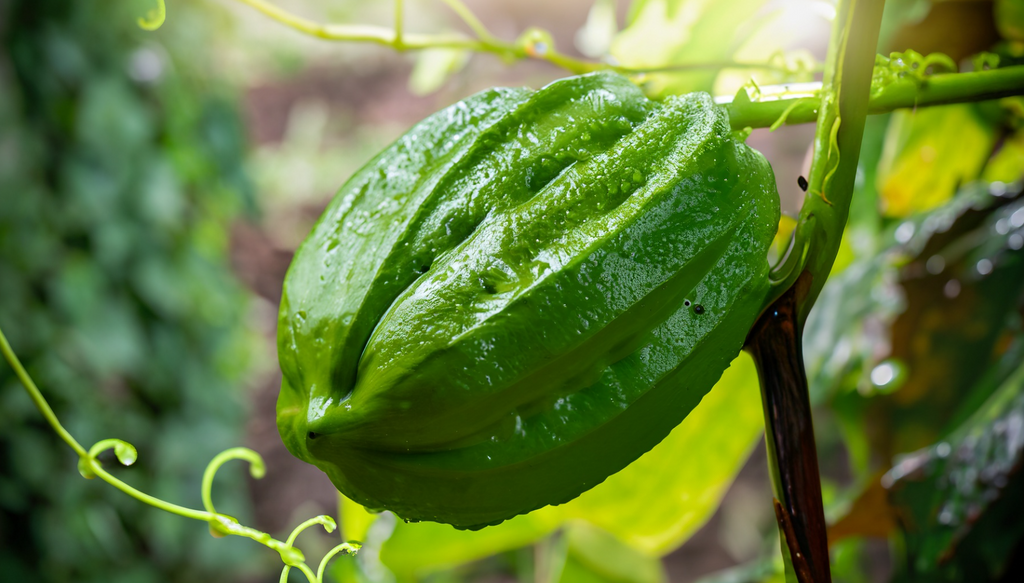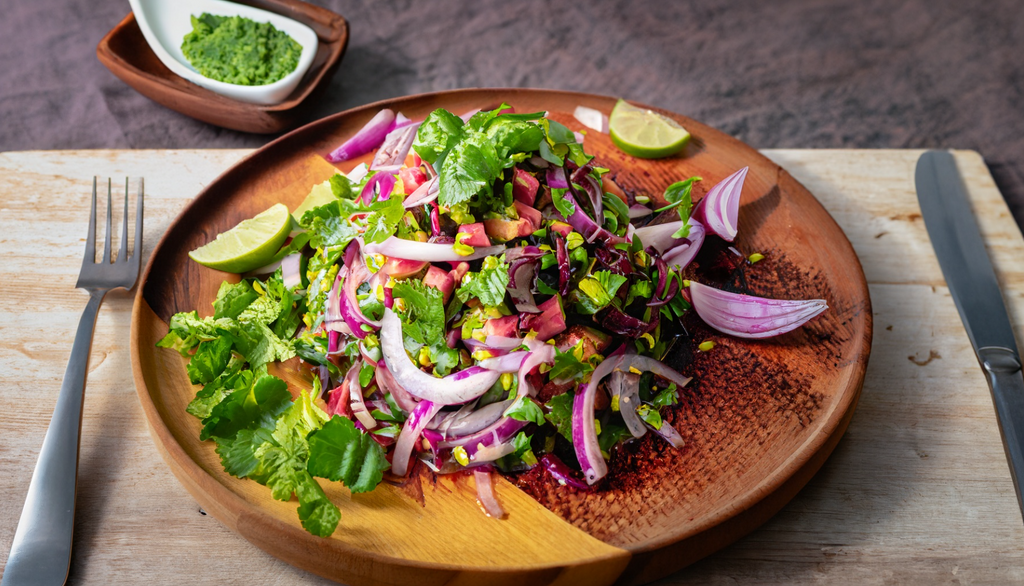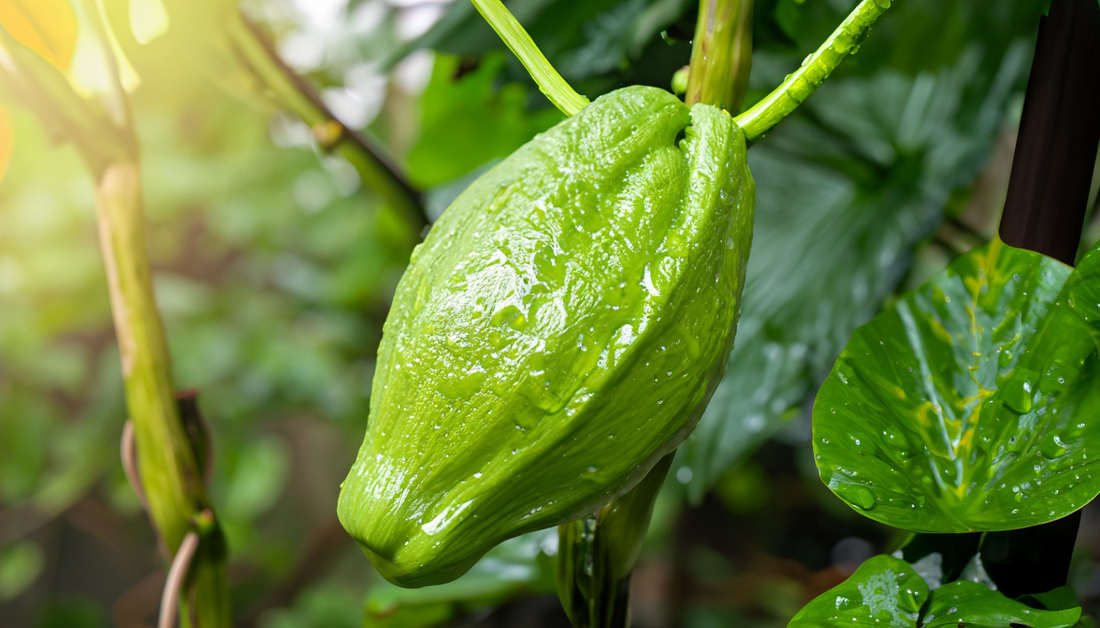If you are looking for a versatile and nutrient-rich vegetable to add to your diet, look no further than choko. Also known as chayote or vegetable pear, choko is a green, pear-shaped vegetable with a mild taste that can be enjoyed in a variety of dishes. In this ultimate guide, we will explore the benefits, uses, and recipes of choko vegetable, and help you incorporate it into your diet.
What is Choko?

Choko (Sechium edule) is a member of the gourd family and is native to Mexico and Central America. It is a climbing vine that produces a pear-shaped fruit with a green, slightly prickly skin. Inside, the flesh is crisp and white, with a single seed in the center. Choko is available year-round and is a popular ingredient in Latin American, Caribbean, and Southeast Asian cuisines.
Health Benefits of Choko
Choko is packed with nutrients that can benefit your health in many ways. Here are some of the key benefits of incorporating choko into your diet:
1. Rich in Vitamins and Minerals
Choko is a good source of vitamins C and K, folate, and potassium. Vitamin C is an antioxidant that helps protect your cells from damage, while vitamin K is important for bone health and blood clotting. Folate is essential for healthy cell growth and development, and potassium helps regulate blood pressure and fluid balance in the body.
2. Promotes Digestive Health
Choko is high in fiber, which can help promote digestive health and prevent constipation. It also contains a substance called inulin, which is a prebiotic that feeds the beneficial bacteria in your gut.
3. Supports Immune Function
Choko is rich in antioxidants, which can help boost your immune system and protect against chronic diseases. It also contains vitamin C, which is important for immune function.
4. Lowers Blood Sugar and Cholesterol
Choko contains a substance called chlorogenic acid, which has been shown to lower blood sugar and cholesterol levels in animal studies. More research is needed to determine if these effects translate to humans, but choko may be a promising food for people with diabetes or high cholesterol.
How to Choose and Store Choko

When buying choko, look for firm, unblemished fruits with a bright green color. Avoid choko that is soft, wrinkled, or has brown spots, as these are signs of spoilage. You can store choko in the refrigerator for up to two weeks, or at room temperature for a few days.
How to Prepare Choko
Choko can be cooked in a variety of ways, and its mild flavor makes it a versatile ingredient in many dishes. Here are some popular ways to prepare choko:
1. Boiled or Steamed
Boiling or steaming choko is a simple way to prepare it. Simply cut the choko in half and remove the seed, then boil or steam for 10-15 minutes until tender. You can season with salt, pepper, or herbs to taste.
2. Stir-Fry
Choko can be stir-fried with other vegetables and meat for a quick and healthy meal. Simply slice the choko thinly and stir-fry with your choice of protein and vegetables.
3. Baked or Roasted
Choko can also be baked or roasted for a delicious and nutritious side dish. Simply cut the choko into wedges, season with olive oil, salt, and pepper, and bake at 400°F for 20-25 minutes.
Choko Recipes
Here are some tasty choko recipes to try at home:

1. Choko Salad
This refreshing salad is a great way to enjoy choko raw.
Ingredients:
- 2 choko, peeled and thinly sliced
- 1/2 red onion, thinly sliced
- 1/2 cup chopped fresh cilantro
- 1/4 cup lime juice
- 2 tbsp olive oil
- Salt and pepper to taste
Directions:
- In a large bowl, combine the choko, onion, and cilantro.
- In a small bowl, whisk together the lime juice, olive oil, salt, and pepper.
- Pour the dressing over the salad and toss to coat. Serve chilled.
2. Choko Soup
This warming soup is perfect for cooler weather.
Ingredients:
- 2 choko, peeled and chopped
- 1 onion, chopped
- 2 cloves garlic, minced
- 4 cups chicken or vegetable broth
- 1/2 cup heavy cream
- Salt and pepper to taste
- Chopped fresh parsley for garnish
Directions:
- In a large pot, sauté the onion and garlic in a little oil until softened.
- Add the chopped choko and broth, and bring to a boil.
- Reduce heat and simmer for 15-20 minutes until the choko is tender.
- Puree the soup with an immersion blender or in a blender until smooth.
- Stir in the cream and season with salt and pepper to taste.
- Serve hot, garnished with chopped parsley.
3. Choko Stir-Fry
This quick and easy stir-fry is perfect for busy weeknights.
Ingredients:
- 2 choko, peeled and thinly sliced
- 1 red bell pepper, thinly sliced
- 1 onion, thinly sliced
- 1 cup sliced mushrooms
- 2 cloves garlic, minced
- 1 tbsp soy sauce
- 1 tbsp oyster sauce
- 1 tbsp cornstarch
- 1/4 cup water
- 2 tbsp vegetable oil
Directions:
- In a small bowl, whisk together the soy sauce, oyster sauce, cornstarch, and water. Set aside.
- In a large wok or skillet, heat the vegetable oil over high heat.
- Add the choko, bell pepper, onion, mushrooms, and garlic, and stir-fry for 5-7 minutes until tender.
- Pour the sauce over the vegetables and stir to coat.
- Cook for another 2-3 minutes until the sauce has thickened.
- Serve hot with rice or noodles.
Conclusion
Choko vegetable, also known as chayote or vegetable pear, is a versatile and nutrient-rich vegetable that can benefit your health in many ways. It is rich in vitamins and minerals, promotes digestive health, supports immune function, and may lower blood sugar and cholesterol levels. Choko can be cooked in a variety of ways, including boiling, steaming, stir-frying, baking, and roasting, and can be enjoyed in a variety of dishes, from salads and soups to stir-fries and side dishes. With these recipes and tips, you can easily incorporate choko into your diet and enjoy its many benefits.
FAQs
-
Is choko the same as chayote? Yes, choko and chayote are different names for the same vegetable.
-
Is choko easy to find in grocery stores? Choko is widely available in most grocery stores and markets.
-
Can I eat choko raw? Yes, choko can be eaten raw in salads or slaws.
-
Is choko a good source of protein? No, choko is not a particularly good source of protein, but it is rich in other nutrients like vitamins and minerals.
-
Can choko be frozen? Yes, choko can be frozen, but it may become softer and less firm when thawed.
-
Is choko a good vegetable for weight loss? Yes, choko is a low-calorie and nutrient-dense vegetable that can help support weight loss goals when consumed as part of a balanced diet.



